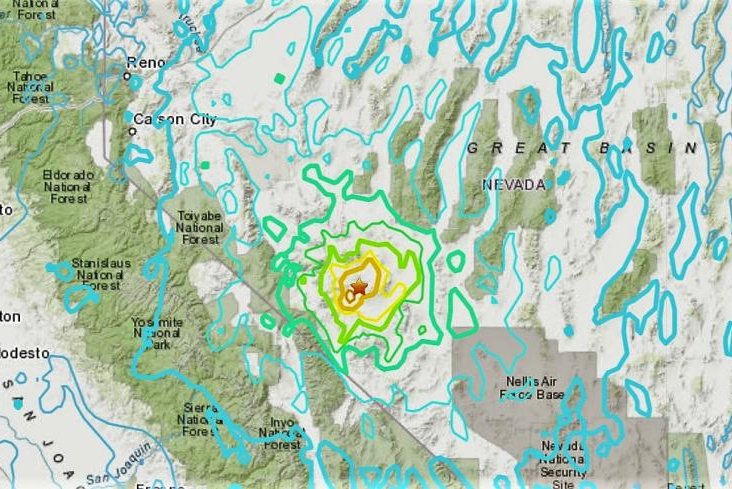
Sherman Jenne, a cashier at the Fred Meyer grocery store in Burien, Wash., takes part in a protest outside the store against Fred Meyer's parent company Kroger, Friday, May 15, 2020, that was organized by the United Food and Commercial Workers International Union. Kroger officials have said they are ending the additional $2 hourly "hero pay" bonus that had been paid to workers since late March during the coronavirus pandemic. The company said Friday it will now offer one-time bonus payments of $400 and $200 for full- and part-time employees to be paid in two installments. (AP Photo/Ted S. Warren)
SPOKANE, Wash. (AP) — Kroger, the parent company of grocer Fred Meyer, announced Friday that it will provide “thank you” payments to hourly employees after a union outcry over the company ending a $2 per hour pay bump it implemented in March amid the coronavirus pandemic.
The United Food and Commercial Workers International Union held rallies Friday at Fred Meyer stores seeking additional pay for workers while the pandemic continues, KREM-TV reported.
Kroger officials said Friday that bonus payments of $400 and $200 for full- and part-time employees will be paid in two installments in May and June.
Fred Meyer has locations in Washington, Oregon, Idaho, and Alaska.

Members and supporters of the United Food and Commercial Workers International Union take part in a protest outside the Fred Meyer grocery store in Burien, Wash., against Fred Meyer's parent company Kroger, Friday, May 15, 2020. Kroger officials have said they are ending the additional $2 hourly "hero pay" bonus that had been paid to workers since late March during the coronavirus pandemic. The company said Friday it will now offer one-time bonus payments of $400 and $200 for full- and part-time employees to be paid in two installments. (AP Photo/Ted S. Warren)
“Our associates have been instrumental in feeding America while also helping to flatten the curve during the initial phases of the pandemic,” Rodney McMullen, Kroger’s chairman and CEO, said in statement. “As the country moves toward reopening, we will continue to safeguard our associates’ health and well-being and recognize their work.”
Testing for the coronavirus is available for Fred Meyer employees based on their symptoms and medical need, said Fred Meyer spokesperson Jeffrey Temple. Workers who are most directly affected by the virus or experiencing related symptoms have been provided with emergency leave or paid time off, he said.
Fred Meyer has also added safety measures throughout the stores including plexiglass partitions on check-out stands and masks for employees.
For most people, the coronavirus causes mild or moderate symptoms, such as fever and cough. For some, especially older adults and people with existing health problems, it can cause more severe illness, including pneumonia, and death.
Testing for the coronavirus is available for Fred Meyer employees based on their symptoms and medical need, said Fred Meyer spokesperson Jeffrey Temple. Workers who are most directly affected by the virus or experiencing related symptoms have been provided with emergency leave or paid time off, he said.
Fred Meyer has also added safety measures throughout the stores including plexiglass partitions on check-out stands and masks for employees.
For most people, the coronavirus causes mild or moderate symptoms, such as fever and cough. For some, especially older adults and people with existing health problems, it can cause more severe illness, including pneumonia, and death.

























